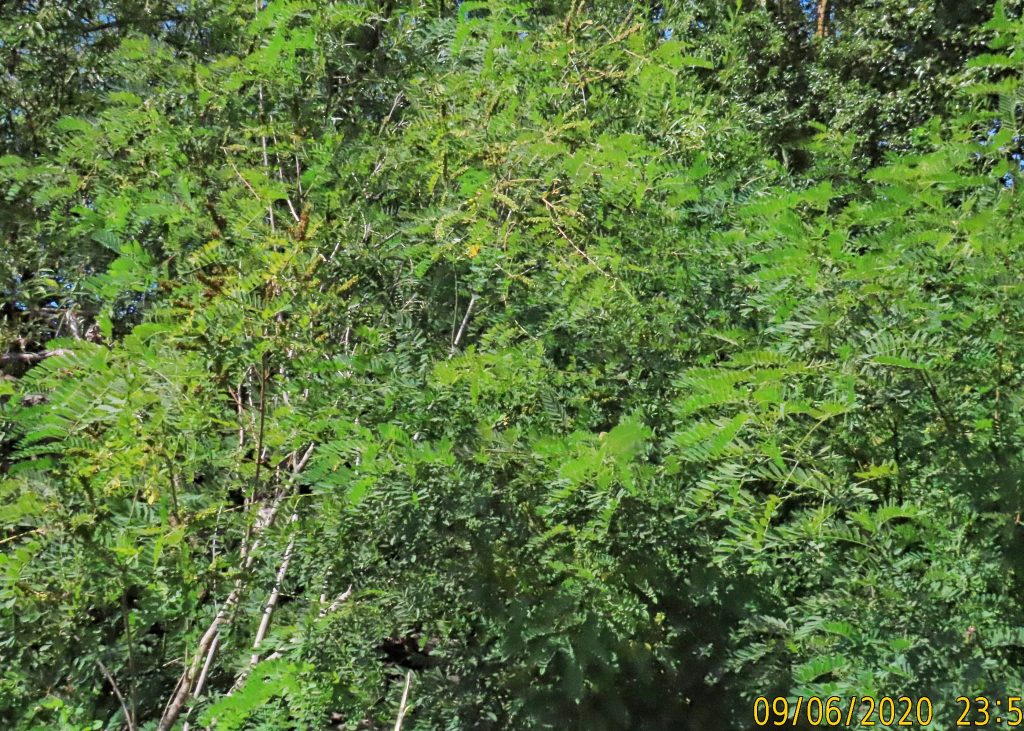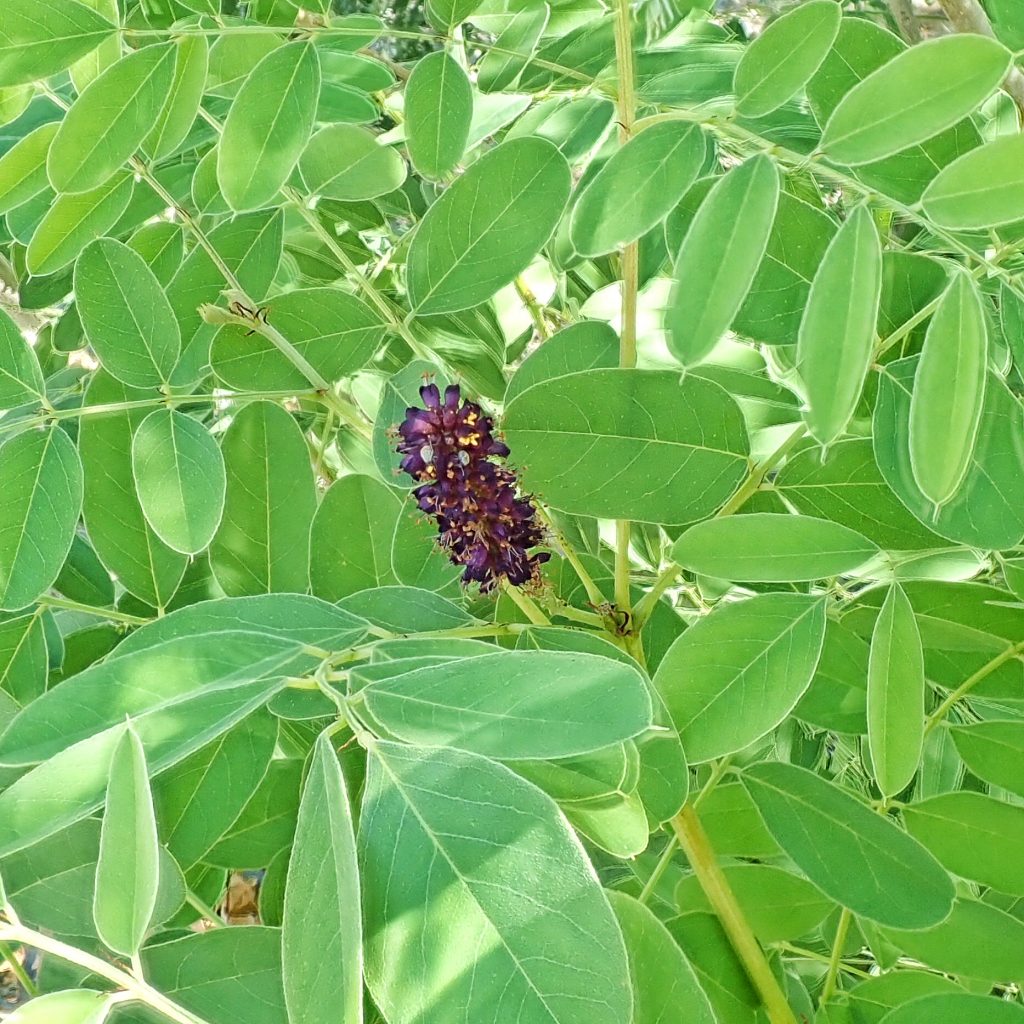
This is a large, bushy shrub which grows in muddy and sandy flats along the Snake and Columbia Rivers, often forming large thickets. It is native to the eastern US, but is an invasive species in our region, having escaped its cultivated use as a stream bank stabilizer. It can be up to 10’ tall, with long, opposite, narrowly oval leaflets that have a glandular hair at their apex. The bluish purple flowers are in tight racemes, and consist of a single petal wrapped around the ten stamens.
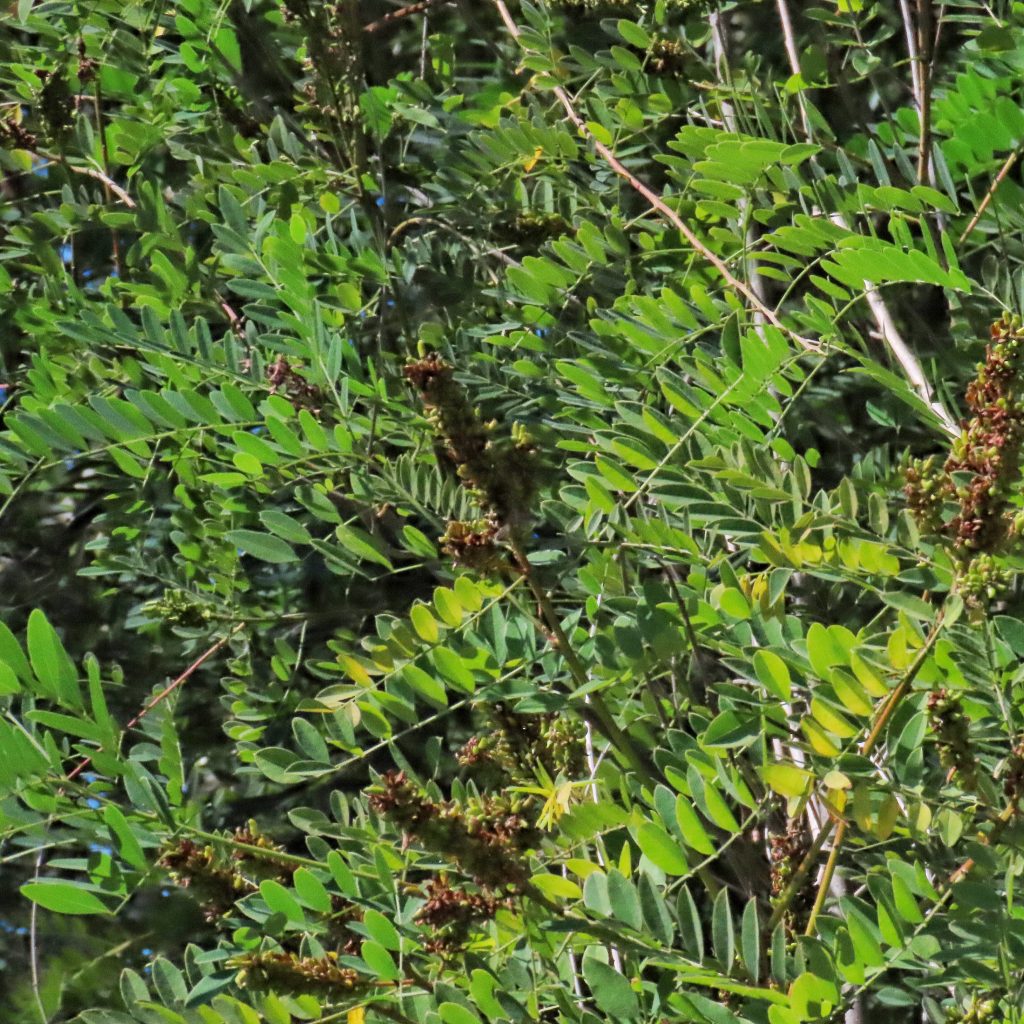
This plant is a preferred larval host for the butterflies Epargyreus clarus (Silver-spotted Skipper), Colias philodice (Clouded Sulfur) and Zerene cesonia (Southern Dogface), as well as a tertiary host for many others. It is also utilized by the tiny (1-3mm) bean weevil Acanthoscelides pallidipennis as both a larval host and adult food source.
Ironically, since Amorpha fruticosa (which is also known as Leadplant) is considered to be a noxious, invasive species in our area, the moth Schinia lucens (Leadplant Flower Moth), for which Amorpha spp. is an obligate larval host, is declining and even endangered in its home range due to the decline of False Indigo because of habitat loss.
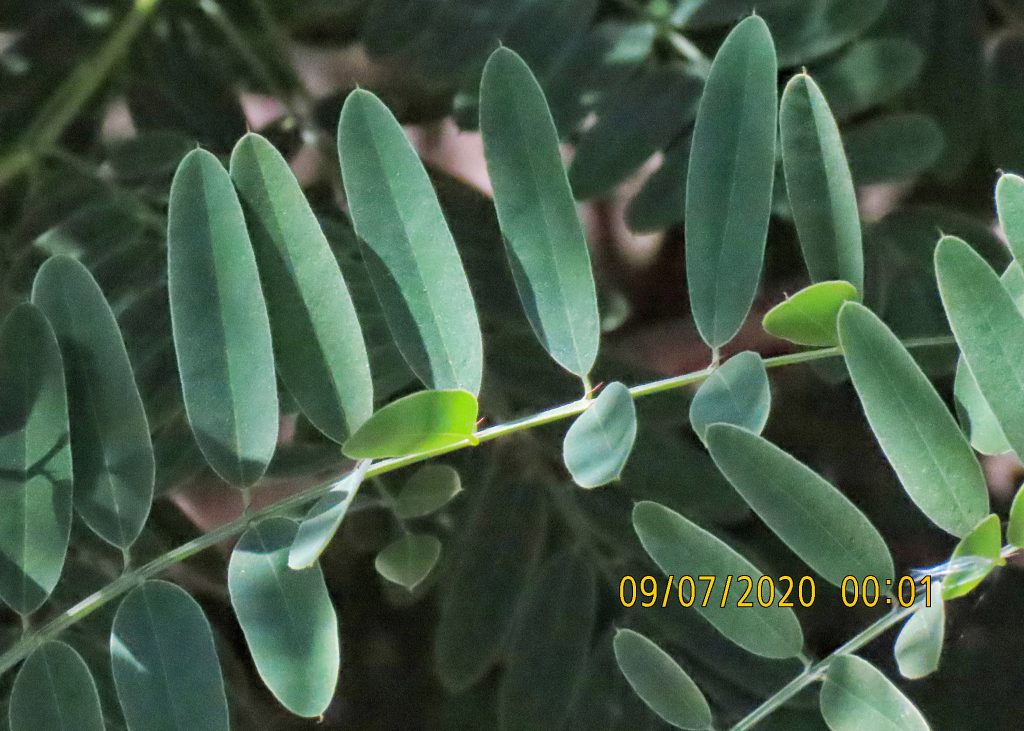
The genus name Amorpha means without form and refers to the shapeless, single petalled flowers. The species epithet fruticosa means bushy, which these plants certainly are. The plant contains small quantities of a pigment which Native Americans and early settlers used to make a blue dye, and thus the common name False Indigo.
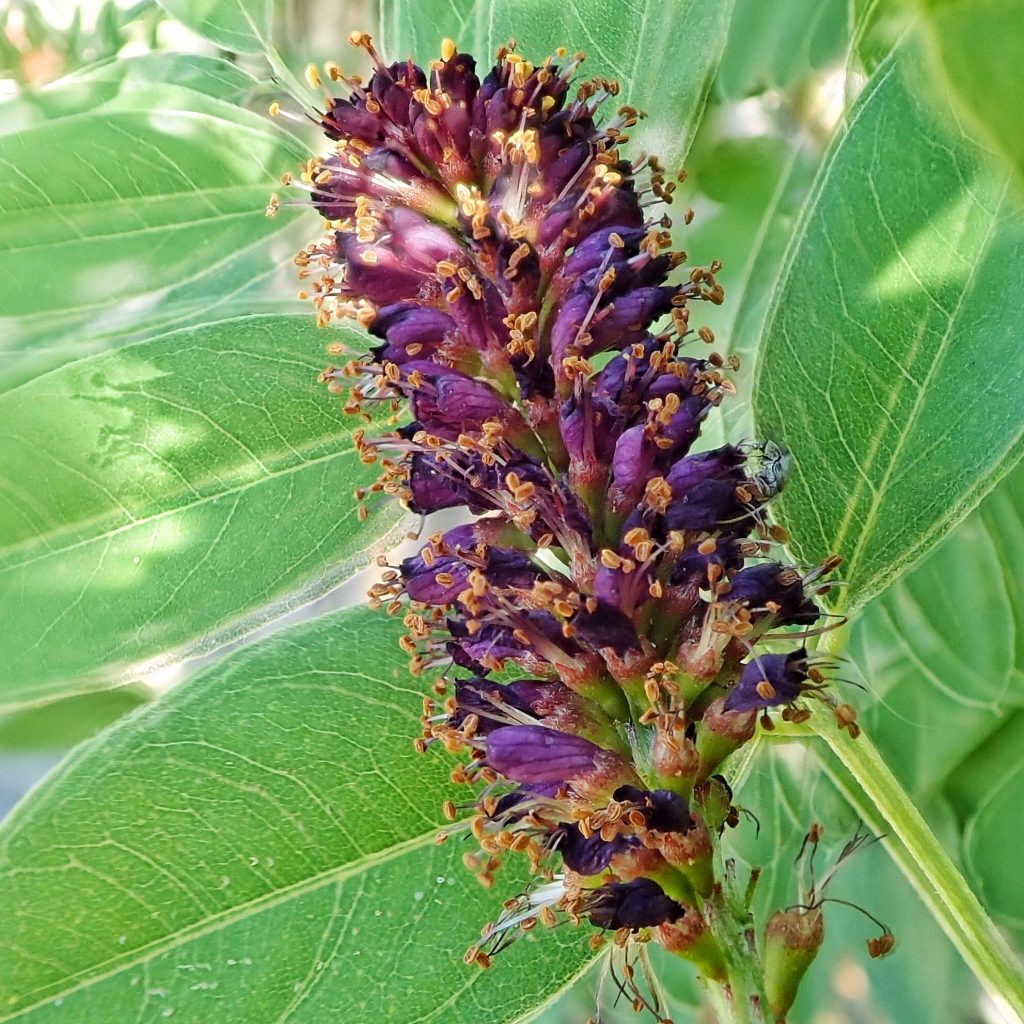
Amorpha fruticosa | Western False Indigo | Wildflowers of the Pacific Northwest
https://www.wildflower.org/plants/result.php?id_plant=amfr
https://calscape.org/Amorpha-fruticosa-(Western-False-Indigo)?srchcr=sc583581cde79cc
Size- Up to 10’ tall and bushy
Habitat- Sandy and muddy shorelines
Range- Along the Snake and Columbia Rivers in our region. Non-native
Blooms- All summer
